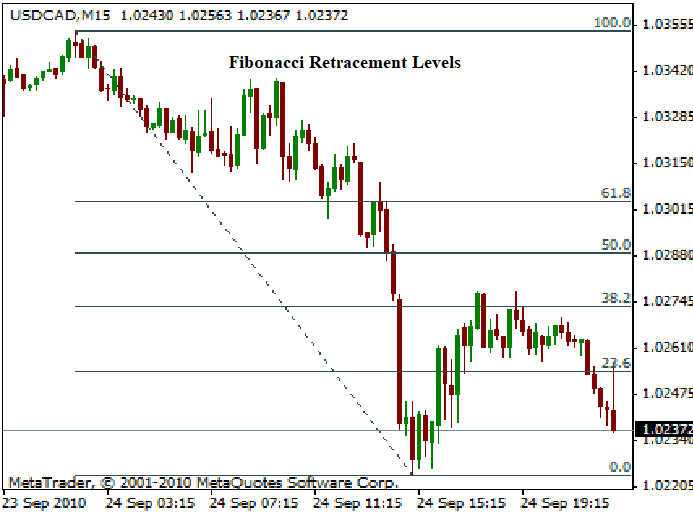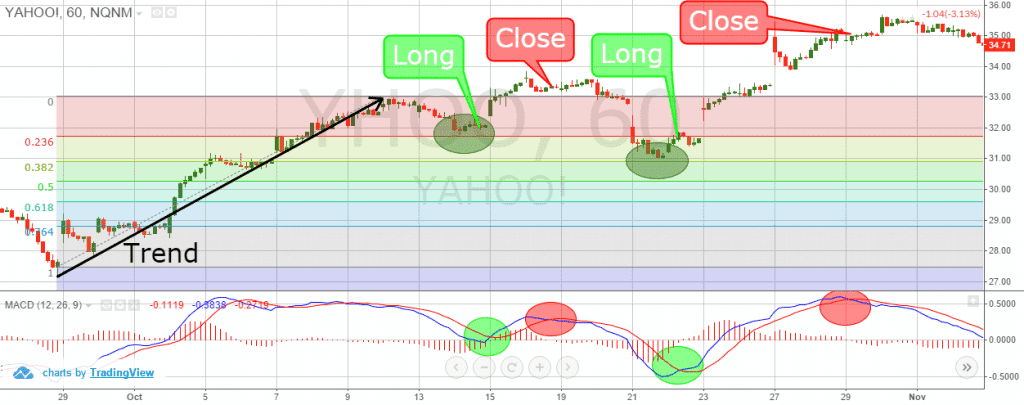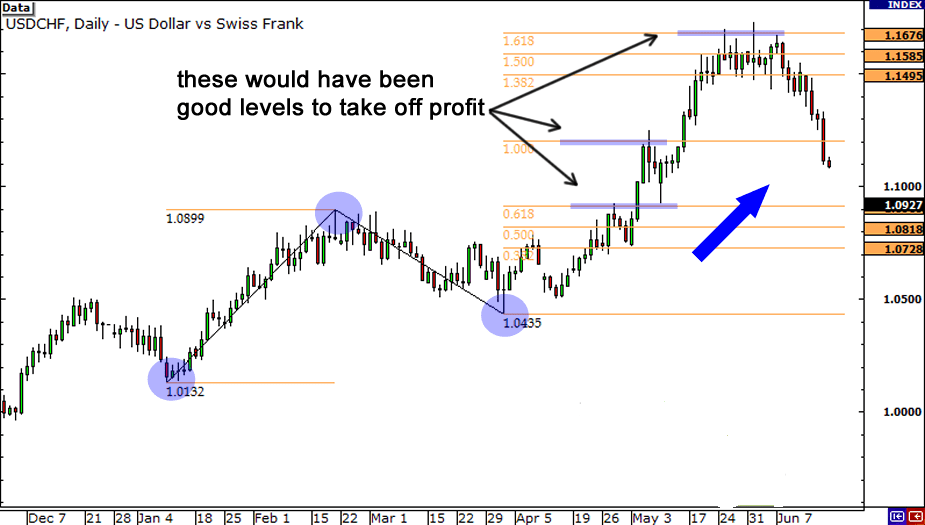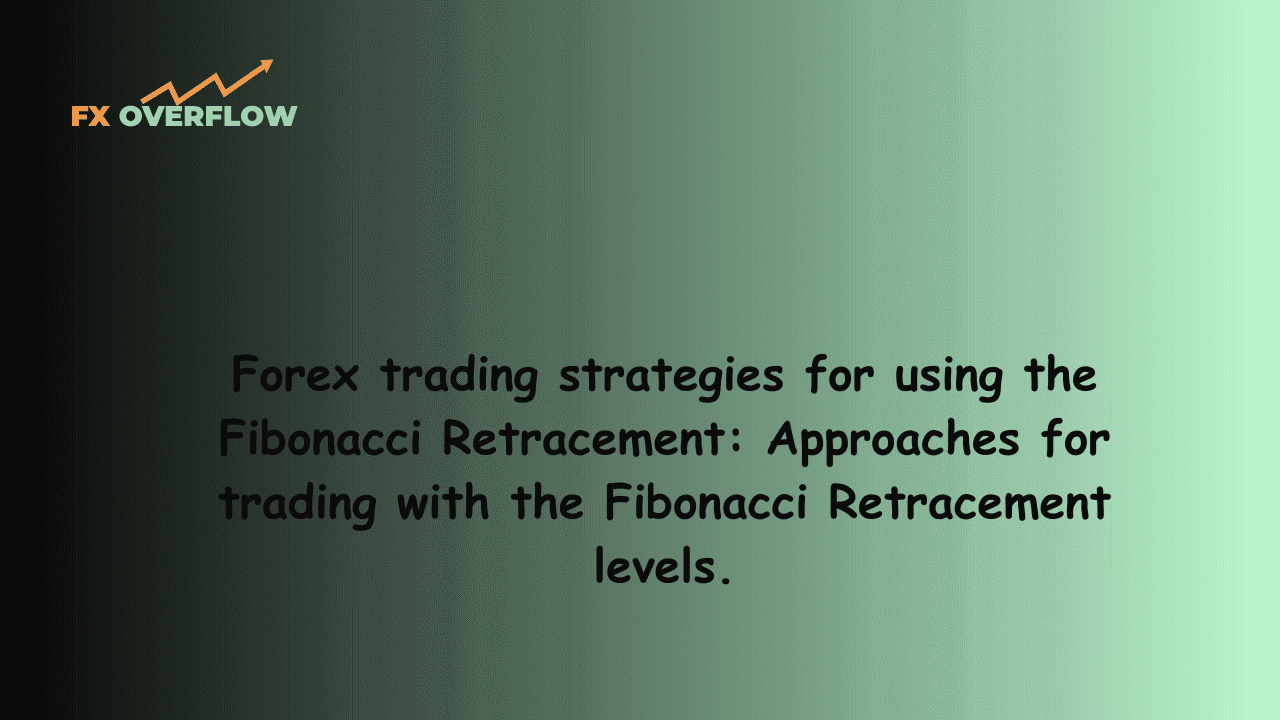Forex Trading Strategies Using Fibonacci Retracement: Approaches for Trading with Fibonacci Retracement Levels
In the dynamic world of forex trading, having a well-defined strategy is crucial to navigate the complexities of the market. One strategy that has stood the test of time is utilizing Fibonacci retracement levels. Named after the renowned Italian mathematician Leonardo Fibonacci, these levels offer traders a unique perspective on potential price reversals and trends within the market. In this article, we will delve into the various approaches for trading with Fibonacci retracement levels, exploring how this tool can be harnessed to make informed trading decisions.
Table Content
I. Understanding Fibonacci Retracement
II. Fibonacci Retracement Strategies
1. The Classic Retracement Strategy
2. Combining Fibonacci with Other Indicators
3. Fibonacci Extensions
4. Confluence of Fibonacci Levels
5. Using Fibonacci Retracements for Risk Management
6. The Fibonacci Fan Strategy
III. Guidelines for Trading with Fibonacci Retracement
1. Identify Clear Trends
2. Choose Significant Highs and Lows
3. Combine with Other Tools
4. Practice on Multiple Timeframes
5. Risk Management is Key
6. Avoid Overcomplicating
IV. Footnote
Understanding Fibonacci Retracement:
Before delving into the strategies, it's imperative to comprehend the basics of Fibonacci retracement. The concept revolves around the idea that after a significant price movement, a certain percentage of that movement will be retraced before the price continues in the original direction. These retracement levels, derived from the Fibonacci sequence, include 23.6%, 38.2%, 50%, 61.8%, and 78.6%. Traders utilize these levels as potential support and resistance areas, aiding in predicting potential reversal points or areas of continuation.

Fibonacci Retracement Strategies:
1. The Classic Retracement Strategy:
The classic approach involves identifying a prominent trend, either bullish or bearish, and applying the Fibonacci retracement tool to the chart. The retracement levels act as potential entry points for traders looking to join the trend at a more favorable price. For instance, in an uptrend, a trader might wait for the price to retrace to the 50% or 61.8% level before entering a long position. This strategy capitalizes on the idea that the price is likely to find support at these levels before resuming its upward movement.
2. Combining Fibonacci with Other Indicators:
To enhance the accuracy of trading signals, traders often combine Fibonacci retracement levels with other technical indicators. For instance, pairing the retracement levels with trendlines, moving averages, or oscillators can provide a more comprehensive view of the market's direction. If the Fibonacci retracement level aligns with a trendline or a moving average, it strengthens the potential support or resistance area, increasing the probability of a successful trade.

Sources from TradingView
3. Fibonacci Extensions:
While retracement levels help predict potential reversal points, Fibonacci extensions aid in identifying where the price might travel after a retracement. Extensions are particularly useful when a trend continues beyond its previous high or low. Traders can use extensions in combination with retracement levels to create profit targets. For instance, if a retracement ends near the 38.2% level, a trader might use the 161.8% or 261.8% extension level as a target for their trade.

4. Confluence of Fibonacci Levels:
Confluence occurs when multiple Fibonacci retracement levels cluster around the same price area. This convergence strengthens the significance of that level as a potential turning point. Traders often look for confluence zones where several Fibonacci levels intersect or are in close proximity. These zones become high-probability areas for trades, as they indicate a strong alignment of different traders using the same levels to make their decisions.
5. Using Fibonacci Retracements for Risk Management:
Fibonacci retracement levels can also be employed for risk management purposes. Traders can set stop-loss orders just below (in a long trade) or above (in a short trade) a key Fibonacci level. This helps protect capital in case the trade does not move as expected. By placing stops strategically, traders ensure that their potential losses are limited while giving the trade enough room to breathe.
6. The Fibonacci Fan Strategy:
The Fibonacci fan is another tool that can be used alongside retracement levels. It involves drawing trendlines from a selected high or low price to other points on the chart. The trendlines created form a fan-like pattern, and these angles are based on Fibonacci ratios. The fan lines act as potential support or resistance levels, aiding traders in identifying potential entry and exit points.

Guidelines for Trading with Fibonacci Retracement:
1. Identify Clear Trends: Fibonacci retracement works best in clearly defined trends. Identify whether the market is in an uptrend or a downtrend before applying the strategy.
2. Choose Significant Highs and Lows: Select the most prominent swing highs and lows to draw accurate Fibonacci retracement levels. These points should represent major price moves.
3. Combine with Other Tools: Enhance the effectiveness of the strategy by using Fibonacci retracement levels in conjunction with other technical analysis tools like trendlines, moving averages, and oscillators.
4. Practice on Multiple Timeframes: Fibonacci retracement levels can vary across different timeframes. Practice using the tool on various timeframes to understand how it behaves in different market conditions.
5. Risk Management is Key: Always incorporate risk management principles into your trades. Use appropriate position sizing and set stop-loss orders to protect your capital.
6. Avoid Overcomplicating: While combining strategies can be beneficial, avoid overcomplicating your analysis. Keep your approach concise and focused.
Footnote:
Fibonacci retracement levels have earned their place as a staple in the toolbox of forex traders. The mathematical foundation and the psychological significance of these levels make them an invaluable resource for predicting potential market movements. From classic retracement strategies to advanced techniques involving confluence and extensions, traders have a range of approaches at their disposal.
However, like any trading strategy, Fibonacci retracement is not foolproof. It's essential to combine it with other forms of analysis and to practice prudent risk management. As the forex market evolves, so too must the strategies used to navigate it. By understanding and mastering Fibonacci retracement, traders can add a versatile and effective tool to their trading arsenal, enabling them to make more informed decisions in this complex and ever-changing landscape.











Discussion